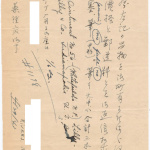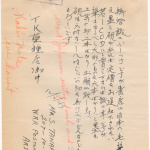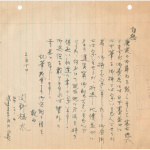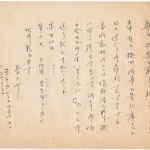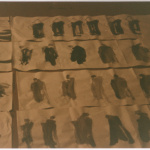Charles Erabu Mikami
| Name | Charles Erabu Mikami |
|---|---|
| Born | January 30 1902 |
| Died | September 16 1998 |
| Birth Location | Hiroshima |
| Generational Identifier |
Charles Erabu (Suiko) Mikami (1902–98) was a sumi-e painter who painted many desolate camp landscapes while incarcerated in the Tule Lake and Topaz concentration camps during World War II. He was born in Hiroshima, Japan, in 1901, and began studying sumi-e , Japanese traditional brush painting at age fourteen. In 1919 he immigrated to Seattle, Washington, with the hopes of attending art school. In Seattle he married Mifuye (Ota), and to support his family, he became a produce broker for Japanese farmers in the Kent Valley, delivering their produce daily to the Pike Place Market. He continued practicing his painting and art as well as writing senryū poetry, and rose in prominence in the community.
After Pearl Harbor was bombed in 1941, Mikami was arrested by the FBI and incarcerated at the Pinedale Assembly Center in California. He was joined by his wife and two sons in Tule Lake, before he was finally transferred to Topaz in Utah. Once the family had settled at Topaz, Mikami joined other artists at the Topaz Art School, founded by Chiura Obata and George Matsusaburo Hibi to teach. Other instructors for the school included Hisako Hibi , Minè Okubo , and Byron Takashi Tsuzuki . After the war the family relocated to Coyote, California, where they stayed with Ota family and helped with their farm. Mikami finally settled in Morgan Hill, California, where he purchased land and began a new life as a strawberry farmer, while painting sumi-e and writing senryū poems.
Mikami's paintings are held in the collections of museums such as the Smithsonian, the Japanese American National Museum in Los Angeles, the Japanese America Museum of San Jose, the Sacramento State Art Museum, and the Wing Luke Museum in Seattle, Washington.
In 1977, the Japanese Government awarded Mikami the Order of Sacred Treasure, 5th Class for his civic service and for his contribution to U.S.-Japan friendship and cultural exchange.
He died on September 16, 1998, at the age of ninety-six.
For More Information
Video Interview with Kris Mikami. "Art Behind Barbed Wire." http://abbw.info/2012/11/03/video-interview-with-kris-mikami/ .
The View from Within: Japanese American Art from the Internment Camps, 1942-1945 . Los Angeles: Japanese American National Museum, UCLA Wight Art Gallery, and UCLA Asian American Studies Center, 1992.
Last updated April 17, 2024, 4:37 a.m..


